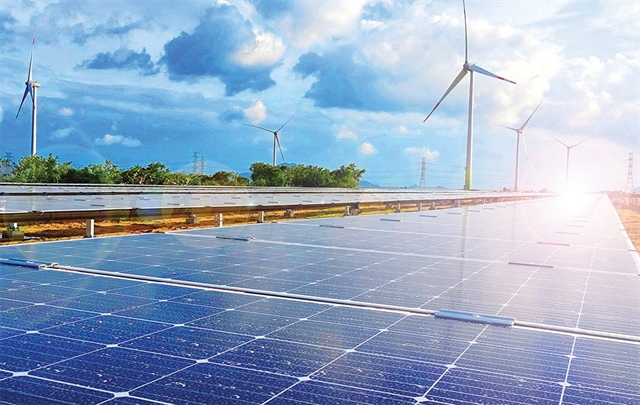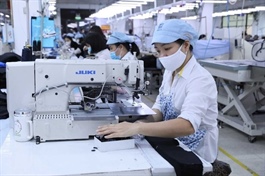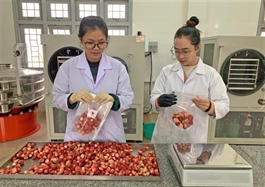Implementation plan next for revised PDP8
Implementation plan next for revised PDP8
In the country’s revised power plan, approved in April, targets for the nation’s power capacity have almost tripled within just five years. With annual investment needs reaching $27.6 billion, experts warn that unresolved issues, especially electricity pricing, will pose a major challenge for attracting financial backers.
Under the revised Power Development Plan VIII (PDP8), total installed capacity is expected to soar to between 156,000 and 208,000MW by 2030. This aggressive growth is designed to ensure energy security, sustain rapid economic development, and reduce reliance on imported fossil fuels.
The focus is heavily weighted towards renewables, including significant additions in solar, wind, biomass, waste-to-energy (WtE), and battery storage.
Vietnam is positioning itself as a key player in the regional energy transition. However, the capital required and ongoing regulatory uncertainties present formidable barriers that must be addressed to turn the vision into reality.
A key highlight of the PDP8 is the planned surge in renewable energy capacity. By 2030, Vietnam is targeting between 26,000 and 38,000MW of onshore and nearshore wind power, nearly doubling from current levels. Offshore wind (OSW), a relatively untapped resource, is projected to add 6,000MW, marking Vietnam’s first major foray into this sector.
Solar power leads the renewable expansion, with a target range of 46,450-73,400MW.
To support these renewable ambitions, Vietnam also plans to scale up its energy storage capacity significantly. Battery storage systems are set to reach between 10,000-16,300MW by 2030, a hike from just 300MW under the original PDP8. This development is essential for grid stability, particularly in regions with high renewable penetration.

Implementation plan next for revised PDP8 |
Limited capacity
However, the financing requirements are substantial. According to former director of the Renewable Energy Centre at the Ministry of Industry and Trade, Dr. Nguyen Anh Tuan, Vietnam will need around $136.3 billion in investment between 2026 and 2030 – about $27.6 billion annually – to achieve the revised targets.
“This is nearly double the amount projected in the plan approved just two years ago,” he noted. “State-owned power corporations, including Vietnam Electricity (EVN), Petrovietnam, and Vinacomin, currently have limited capacity to invest beyond a few strategic projects such as nuclear energy and core grid infrastructure. For the majority of renewable energy schemes, Vietnam must rely on private sector resources, especially for wind and solar.”
With such high demands for capital and manpower in a relatively short timeframe, market mechanisms to attract investment and personnel are critical. Tuan emphasised that since Vietnam ended the feed-in tariff (FiT) support mechanism in 2021, renewable energy development has stalled.
“Only around 1,200MW of wind power has been added, and there have been virtually no new ground-mounted solar projects,” he explained.
One of the key obstacles to attracting private investment is Vietnam’s electricity pricing framework. Most power purchase agreements are denominated in VND, with limited adjustments for exchange rate fluctuations. This model has raised red flags for foreign investors, who raise capital in US dollars and face significant foreign exchange risks. The VND depreciates by an estimated 4-6 per cent annually, eroding investor returns over time.
Moreover, such agreements contain retroactive clauses requiring developers to return payments to EVN in the event of regulatory violations, even those resulting from unclear guidelines. This has made investors wary, particularly after the experience of projects developed under the FiT regime in 2018-2021.
As many as 172 renewable energy plants remain without final commissioning approvals, leaving them unable to access FiT1 rates of 9.35 US cents per kWh. Instead, they receive lower temporary rates or operational-cost-based payments, causing financial strain and dampening investor enthusiasm.
Dr. Nguyen Huy Hoach, an expert from the Vietnam Energy Association, stressed the importance of setting electricity prices promptly following the approval of the revised PDP8. “The target of reaching up to 236,350MW by 2030 is highly ambitious. Achieving this will require clear legal frameworks and strong solutions, including attractive electricity pricing mechanisms,” Hoach said.
He added that for OSW, which Vietnam has yet to implement, setting competitive tariffs will be crucial.
“We need to study international markets carefully to determine appropriate pricing that reflects both the local context and global benchmarks,” he noted. “Given that OSW projects rely heavily on foreign investment, largely denominated in US dollars, pricing in VND must be evaluated to ensure it meets investor expectations.”
Clear pricing mechanisms
Emerging sectors like OSW and WtE are integral to the PDP8’s vision, yet both remain constrained by unresolved pricing frameworks.
For OSW, EVN has proposed a tiered pricing model based on geographic regions. Northern projects in Quang Ninh and Haiphong could receive VND3,975 (15 US cents) per kWh, as would some areas in the south, while those in south-central Binh Thuan are priced at VND3,078 (12 US cents). These rates, however, remain provisional, and industry experts warn they may fall short of the levels required to attract financing for such capital-intensive ventures.
Hoach emphasised that Vietnam, having yet to implement a single OSW project, must set tariffs that reflect both international benchmarks and local conditions. OSW initiatives often face higher development costs and extended payback periods, necessitating a carefully calibrated pricing structure.
However, Tuan argues that these rates are insufficient. WtE projects contend with unique risks, including unreliable waste supply and the absence of long-term waste delivery guarantees from local authorities. Moreover, being categorised as public services, WtE plants are subject to local governments’ efforts to minimise waste treatment costs, further compressing profit margins.
Currency depreciation compounds these issues. Developers estimate that over five years, exchange rate fluctuations could erode revenues by up to 30 per cent, far outpacing the modest inflation adjustments embedded in existing tariffs. For projects like OSW and WtE, which require long-term capital commitments, these financial risks are deterrents unless adequately addressed.
Recognising these challenges, the Ministry of Industry and Trade (MoIT) is working on detailed implementation guidelines for the PDP8. The ministry has asked provincial governments and state-owned enterprises to review and align all energy projects with the revised plan’s objectives. Provincial authorities must update local planning documents to reflect PDP8 targets, ensuring alignment with the national energy strategy.
The MoIT has also stressed strict oversight. Underperforming developers could face licence revocation, while land clearance for critical infrastructure schemes is being prioritised. Institutions like the Vietnam Energy Institute and the National Load Dispatch Centre have been assigned to produce detailed reports on grid capacity and propose technical solutions to support the PDP8’s rollout.
- 10:00 10/05/2025























